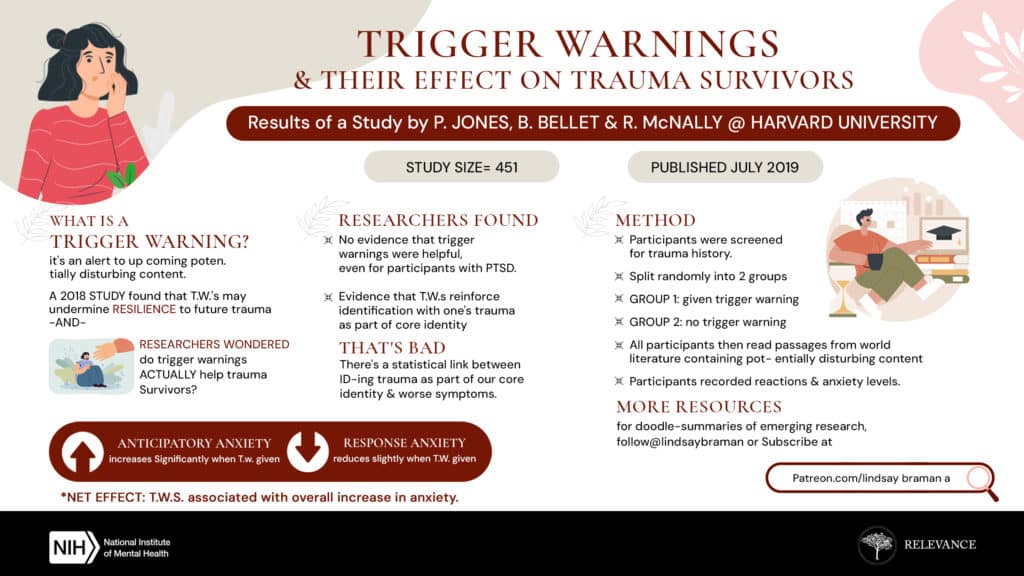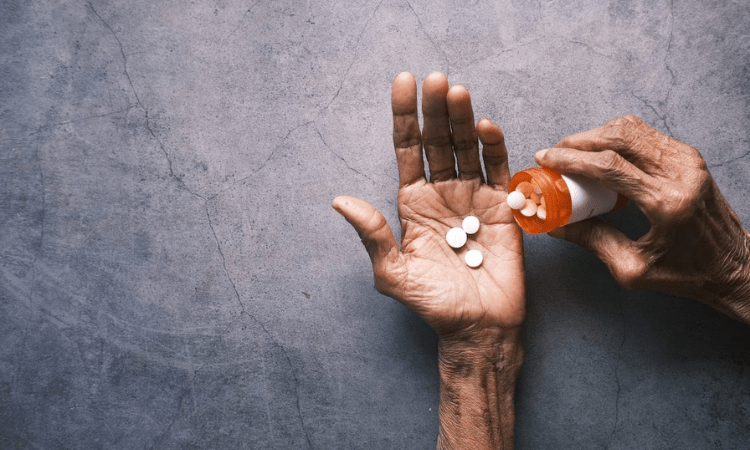Understanding trauma triggers
Trauma triggers are strong reminders that can make you feel like you’re back in a traumatic event. Triggers can be things like what we see, hear, smell, or situations that remind us of a bad experience. It is important for people who have gone through trauma to know what triggers their trauma. This helps them handle their feelings and reactions in a good way.
What causes brain trauma and triggers?
Brain trauma can happen from physical injuries, accidents, or even emotional abuse. When a traumatic event occurs, it can have a lasting impact on the brain, leading to changes in the way it functions. These changes can make a person more likely to get triggered. Their brain becomes extra sensitive to things connected to the traumatic event.
The impact of trauma triggers on mental health
Trauma triggers can have a significant impact on mental health, especially for individuals who have been diagnosed with post-traumatic stress disorder (PTSD) or complex PTSD. When triggered, individuals may experience intense fear, anxiety, or panic attacks. These triggers can also lead to a sense of helplessness, emotional numbness, or even dissociation from reality. It’s important to recognize the impact of trauma triggers on mental health and seek appropriate support.
Types of trauma triggers
Trauma triggers can vary from person to person, as they are highly individualized. However, there are some common types of triggers that many people experience.
The main types of triggers are – internal triggers and external triggers.
- Internal Triggers: They occur in the body. Thoughts, feelings, or physical sensations (e.g., racing heart, sweating palms, etc.) can all lead to PTSD. Examples of Internal triggers:
- feelings of anger or anxiety
- feeling abandoned, lonely, or vulnerable
- feelings of frustration or sadness
- memories
- pain or muscle tension
- External Triggers are events that occur outside of your physical environment. These events, people, or locations can cause PTSD symptoms and evoke memories of a traumatic event.
- Environmental triggers include specific locations, objects, or situations that remind us of the traumatic event. For example, a car accident survivor might feel triggered when driving or being near the scene of an accident.
- Sensory triggers involve our senses and can include smells, sounds, or even certain textures that remind us of the traumatic experience. For instance, a combat veteran may feel triggered by loud noises or the smell of gunpowder.
- Emotional triggers are related to specific emotions or feelings associated with the trauma. These can include feelings of helplessness, fear, or anger.
Post-traumatic stress disorder (PTSD) and triggers
Post-traumatic stress disorder (PTSD) is a mental health condition that can develop after experiencing or witnessing a traumatic event. Individuals with PTSD often experience intrusive thoughts, nightmares, or flashbacks related to the traumatic event. These symptoms can be triggered by various stimuli, such as specific sounds, smells, or situations that remind them of the traumatic experience.
Complex PTSD and triggers
Complex PTSD is a variant of PTSD that occurs when a person has experienced prolonged and repeated trauma, often in a relational or interpersonal context. Individuals with complex PTSD may have additional triggers related to their specific traumatic experiences, such as certain words, gestures, or even specific individuals who remind them of their abuser or the traumatic circumstances. Identifying and understanding these triggers is crucial in managing complex PTSD.
Symptoms of Complex PTSD
The symptoms of complex PTSD are diverse and can manifest in various ways. Some common symptoms include:
- Emotional dysregulation: Individuals with complex PTSD may struggle with intense and fluctuating emotions, often experiencing anger, sadness, or fear in an overwhelming manner.
- Distorted self-perception: Those with complex PTSD often hold negative beliefs about themselves, feeling unworthy, unlovable, or fundamentally flawed.
- Difficulty maintaining relationships: Trust and intimacy can be challenging for individuals with complex PTSD. They may struggle to form close connections or maintain healthy boundaries in relationships.
- Hypervigilance: Constantly being on edge and hyperaware of potential threats is a common symptom of complex PTSD. This heightened state of alertness can lead to exhaustion and feelings of being constantly on edge.
- Dissociation: Individuals with complex PTSD may experience dissociative episodes, where they feel disconnected from their surroundings or their own bodies.
Causes and risk factors of Complex PTSD
Complex PTSD is typically caused by prolonged exposure to traumatic events. The severity and intensity of the trauma, as well as the individual’s age and developmental stage at the time of the trauma, can all influence the development of complex PTSD. Some common risk factors for complex PTSD include:
- Childhood abuse: Survivors of childhood abuse, whether physical, emotional, or sexual, are at a higher risk of developing complex PTSD.
- Domestic violence: Individuals who have experienced ongoing domestic violence, either as a child or as an adult, may develop complex PTSD due to the chronic nature of the trauma.
- Captivity or hostage situations: Being held captive or experiencing a hostage situation can lead to the development of complex PTSD, as individuals are subjected to prolonged trauma and loss of control.
Treatment options for Complex PTSD
Treating complex PTSD requires a comprehensive and individualized approach. The goal of treatment is to address the underlying trauma, manage symptoms, and promote healing and recovery. Some common treatment options for complex PTSD include:
- Trauma-focused therapy: Various therapy approaches, such as Eye Movement Desensitization and Reprocessing (EMDR) and Prolonged Exposure Therapy, can help individuals process and heal from traumatic experiences.
- Cognitive-behavioral therapy (CBT): CBT can be beneficial in identifying and challenging negative thought patterns and beliefs associated with complex PTSD, promoting healthier coping mechanisms and behaviors.
- Medication: In some cases, medication may be prescribed to manage specific symptoms of complex PTSD, such as depression, anxiety, or sleep disturbances.
- Complementary therapies: Complementary therapies, such as yoga, meditation, and art therapy, can be valuable additions to traditional treatment approaches, providing additional tools for healing and self-expression.
Therapy Approaches for Complex PTSD
Several therapy approaches have shown promise in treating complex PTSD. These approaches go beyond traditional therapies and address the unique challenges faced by individuals with complex PTSD.
- Dialectical Behavior Therapy (DBT): DBT combines elements of CBT with mindfulness techniques, helping individuals regulate emotions, develop healthy coping skills, and improve interpersonal relationships.
- Sensorimotor Psychotherapy: This therapy approach focuses on the mind-body connection, helping individuals process traumatic memories and sensations stored in the body, promoting healing from the inside out.
- Schema Therapy: Schema Therapy targets deep-seated beliefs and patterns developed as a result of complex PTSD, aiming to replace maladaptive schemas with healthier ones.
Identifying and recognizing your triggers
One of the first steps in dealing with triggers from trauma is identifying and recognizing them. This requires self-awareness and reflection. Take the time to think about the situations, people, or objects that consistently evoke distressing emotions or memories. Keep a journal to track these triggers and note any patterns that emerge. By identifying and recognizing your triggers, you can begin to develop strategies to cope with them effectively.

How to Identify a Trigger?
Sometimes, it’s easy to spot a trigger and start to plan for it. But sometimes our triggers can be more subtle and even unexpected. Once you know what a trigger is, you’ve made the first step toward learning how to control it.
Triggers are things that are hard to predict, but once we figure them out, we can find connections between things that happen, people we like, or things we see that trigger an emotional response or change our behavior. There are a few different ways to do this.
First, you can create a diary and write down what you’re thinking, feeling, and feeling when having a panic attack. You can get ideas on what to write down like:
- What did you hear?
- What did you see?
- What did you smell?
- How were you feeling?
Once that’s done, you can start to make connections and recognize patterns to figure out what triggers your triggers are.
For example, in a 2013 study, Trusted Source asked 46 people who had gone through trauma to write a daily diary to see if they had any unwanted memories. Over the course of days, they reported 294 unwanted memories. The researchers noticed that most of the people weren’t aware of the triggers that caused the unwanted memories.
If you’re ready to get help for any signs of trauma, you can talk to a psychologist or counselor to figure out what might be causing your symptoms. An expert in mental health can also give you an outsider’s perspective on how you’re feeling and help you figure out what’s causing your reactions.
Coping strategies for dealing with triggers from trauma
Once you have identified your triggers, it’s essential to develop coping strategies to manage them. Here are some techniques that may be helpful:
- Deep breathing and grounding techniques: When triggered, focus on your breath and engage in grounding exercises to bring yourself back to the present moment. For example, you can try counting your breaths or focusing on the sensation of your feet on the ground.
- Self-care practices: Engage in activities that promote relaxation and self-care, such as meditation, yoga, or taking a warm bath. These practices can help reduce stress and anxiety associated with triggers.
- Seek support: Reach out to a trusted friend, family member, or therapist who can provide emotional support and guidance. Talking about your triggers and experiences can help alleviate their impact and provide a sense of validation.
Medication for PTSD Triggers
Certain medications may be prescribed to address some of the symptoms associated with PTSD. Specialized serotonin reuptake inhibitors (SSRIs) may be prescribed for the treatment of depression and anxiety, as well as to reduce the symptoms of PTSD.
SSRIs that are commonly prescribed include:
- Zoloft (sertraline)
- Paxil (paroxetine)
- Prozac (fluoxetine)
Effexor (venlafaxine), a serotonin-norepinephrine reuptake inhibitor (SNRI), is sometimes prescribed to treat PTSD.
Seeking professional help for trauma triggers
While coping strategies can be effective in managing triggers, it’s crucial to seek professional help if you find that your triggers are significantly impacting your daily life and overall well-being. A mental health professional, such as a therapist or counselor, can provide specialized guidance and support tailored to your specific needs. They can help you explore the root causes of your triggers, develop coping mechanisms, and work towards healing and finding peace within.
Creating a support system for managing triggers
In addition to professional help, creating a support system is essential for managing triggers from trauma. Surround yourself with individuals who understand and validate your experiences. Join support groups or online communities where you can connect with others who have gone through similar experiences. Having a support system can provide a safe space to share your feelings, gain insights, and receive encouragement during challenging times.
Treating Trauma
Trauma has a lot of different effects on the brain, so it’s important to get professional help to get the full picture. A mental health professional can suggest different ways to treat trauma, such as:
- Trauma-Focused CBT – This is a form of cognitive behavioral therapy that focuses on the psychological and emotional well-being of individuals who have experienced trauma and are attempting to recover from the detrimental consequences of their past experiences.
- Eye Movement Desensitisation and Reprocessing (EMDR) is a form of psychotherapy that utilizes specific eye movements to process a traumatic event in the past. This technique helps to restore positive pathways in the mind, resulting in more resilient coping mechanisms that can protect individuals from negative thought processes.
- Tension and Trauma-Resolving Exercises (TRE) are fundamental exercises that are intended to reduce stress and tension in the body, thereby reducing the severity of symptoms associated with trauma.
PTSD triggers examples
PTSD triggers can vary significantly from person to person, as they are often unique to an individual’s traumatic experience. Here are some examples of common PTSD triggers:
- Loud noises: For individuals who have experienced combat or violent incidents, loud noises such as fireworks, sirens, or gunshots can trigger intense emotional and physical reactions.
- Certain smells: Smells associated with the traumatic event, such as smoke, chemicals, or specific perfumes, can evoke vivid memories and emotions.
- Specific locations: Being in a place that reminds an individual of their traumatic experience, such as a hospital, accident site, or a specific room, can trigger distressing emotions and memories.
Conclusion
Dealing with triggers from trauma can be challenging, but it is possible to find peace within. By understanding trauma triggers, identifying and recognizing them, developing coping strategies, seeking professional help, and creating a support system, individuals can navigate their journey toward healing and recovery. Remember, you are not alone, and there is help available. If you or someone you know is struggling with trauma triggers, please reach out to a helpline or consider contacting the Relevance Recovery Treatment Center in New Jersey.









